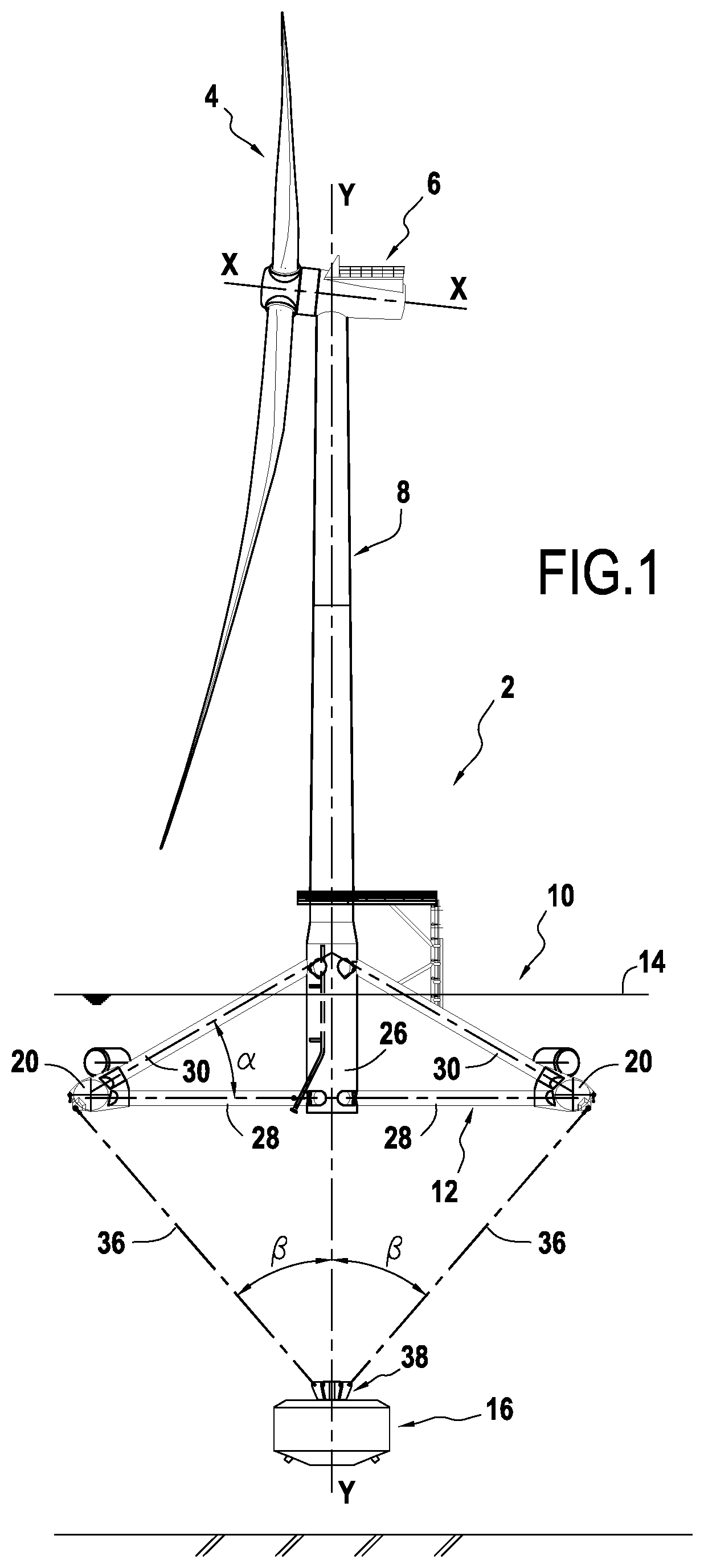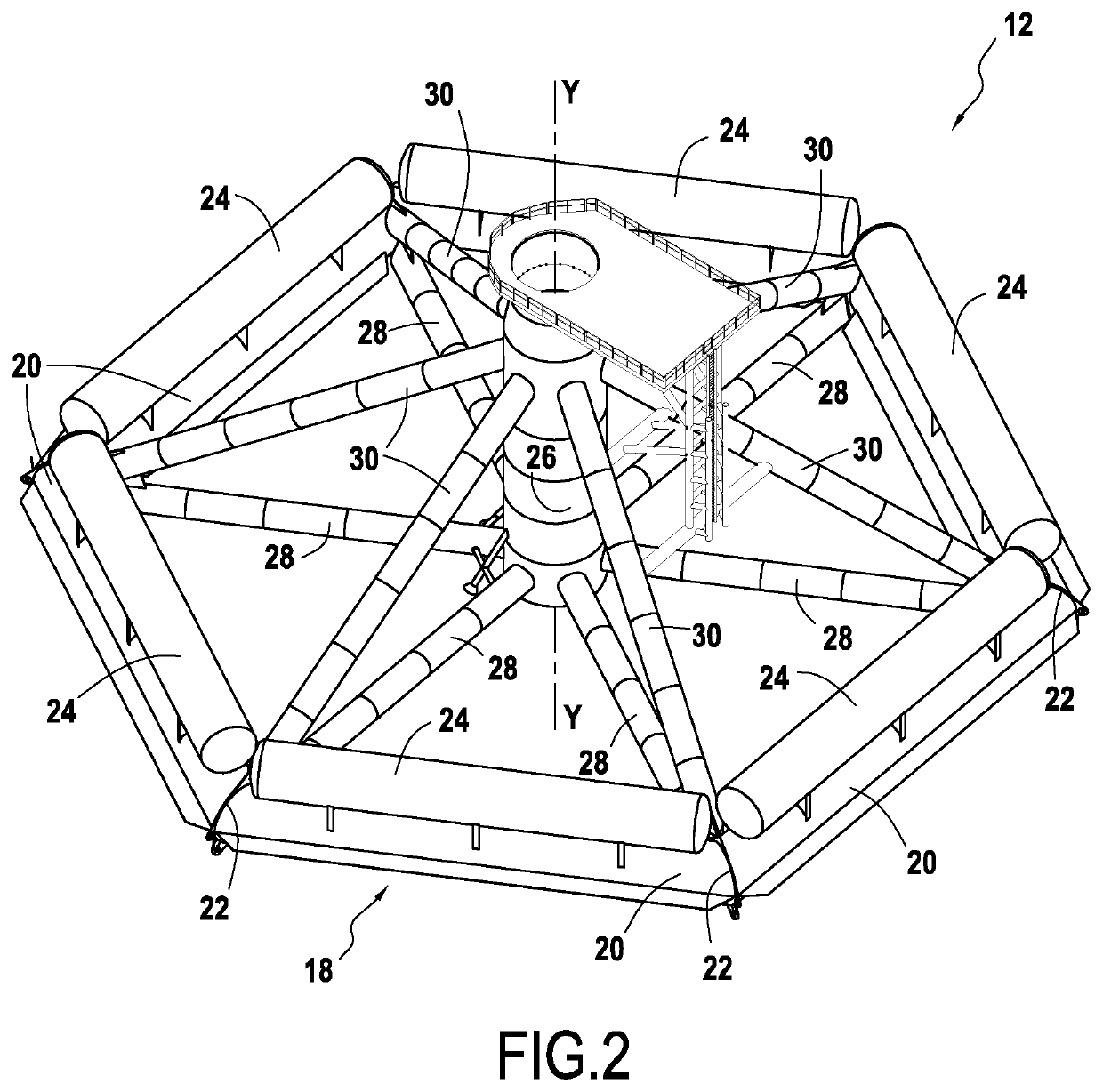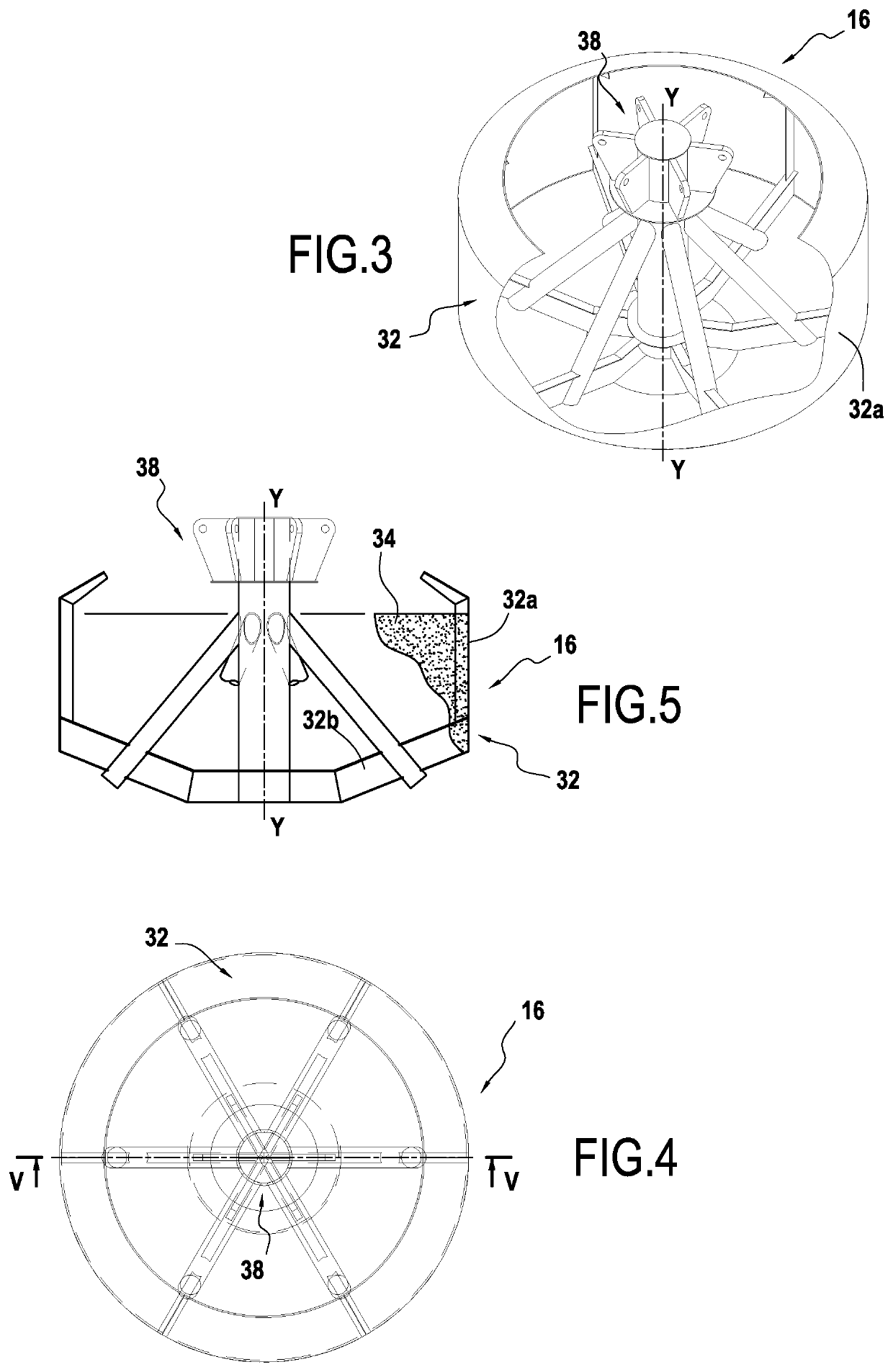Floating support structure for offshore wind turbine and method for installing a wind turbine provided with such a support structure
a technology for offshore wind turbines and support structures, which is applied in the manufacture of wind turbines, waterborne vessels, wind energy generation, etc., can solve the problems of limiting the usability of offshore wind turbines, limiting the speed of displacement of these platforms, and the use of large-capacity crane vessels, which are rare and expensive to install wind turbines, etc., to prevent the stress of swell, increase the stability of rotation, and reduce the mass of materials for the manufacture of this support structures
- Summary
- Abstract
- Description
- Claims
- Application Information
AI Technical Summary
Benefits of technology
Problems solved by technology
Method used
Image
Examples
first embodiment
[0073]In connection with FIGS. 6A to 6Q, there will be described a method for installing, according to the invention, an offshore wind turbine provided with a floating support structure as described above.
[0074]FIGS. 6A to 6H illustrate the different steps of preparation and installation on the seabed of the counterweight of the floating support structure according to the invention.
[0075]In FIG. 6A, a barge 100 transporting in particular the basket 32 of the counterweight of the floating support structure and a deadman 104 is brought into sea on site. The deadman 104 is then descended into sea vertically to the barge 100 by a crane 106 (FIG. 6B) and then placed on the seabed (FIG. 6C).
[0076]A remotely operated vehicle 108 (also called ROV) to supervise these operations and then to install a buoy rope 110 on the deadman 104 is represented in FIG. 6D. Here, the buoy rope 110 is a rope connected to a temporary buoy on the one hand and to a deadman 104 on the other hand, in order to pro...
second embodiment
[0085]In connection with FIGS. 7A to 7K, there will now be described a method for installing, according to the invention, an offshore wind turbine provided with a floating support structure as described above.
[0086]During a first step (FIG. 7A), a barge 200 prepares the temporary area of the seabed in order to allow it to withstand the weight of the baskets filled with ballast of the counterweights of several floating support structures. This preparation consists in discharging on the seabed a filling material allowing the seabed to be able to withstand the weight of the baskets loaded with ballast material while keeping acceptable attitude stability.
[0087]Once the seabed is prepared, a set of empty baskets 32 of counterweights are descended into the sea from the barge 200 and placed on the seabed using a crane 202 (FIG. 7B). The counterweight baskets are placed one after the other during the progression of the barge, their number depending on the number of offshore wind turbines of...
third embodiment
[0097]In connection with FIGS. 8A to 8H, there will be described the method for installing, according to the invention, an offshore wind turbine provided with a floating support structure as described above.
[0098]This variant is particularly advantageous for the dynamic behavior of the counterweight during the descent by linking the basket of the latter to the float by means of several catenary chains, which makes it possible to decouple the movements of each of them. In addition, no preparation of the seabed is required.
[0099]According to a first step illustrated in FIG. 8A, a first tug 300 is used to tow at sea the float 12 of the floating support structure on which the mast of a wind turbine 2 has been previously mounted. The empty basket 32 of the counterweight of the floating support structure is in for its part towed independently by a second tug 302.
[0100]Note that to facilitate the towing of the basket of the counterweight, the latter can be provided with temporary buoys 304...
PUM
 Login to View More
Login to View More Abstract
Description
Claims
Application Information
 Login to View More
Login to View More - R&D
- Intellectual Property
- Life Sciences
- Materials
- Tech Scout
- Unparalleled Data Quality
- Higher Quality Content
- 60% Fewer Hallucinations
Browse by: Latest US Patents, China's latest patents, Technical Efficacy Thesaurus, Application Domain, Technology Topic, Popular Technical Reports.
© 2025 PatSnap. All rights reserved.Legal|Privacy policy|Modern Slavery Act Transparency Statement|Sitemap|About US| Contact US: help@patsnap.com



